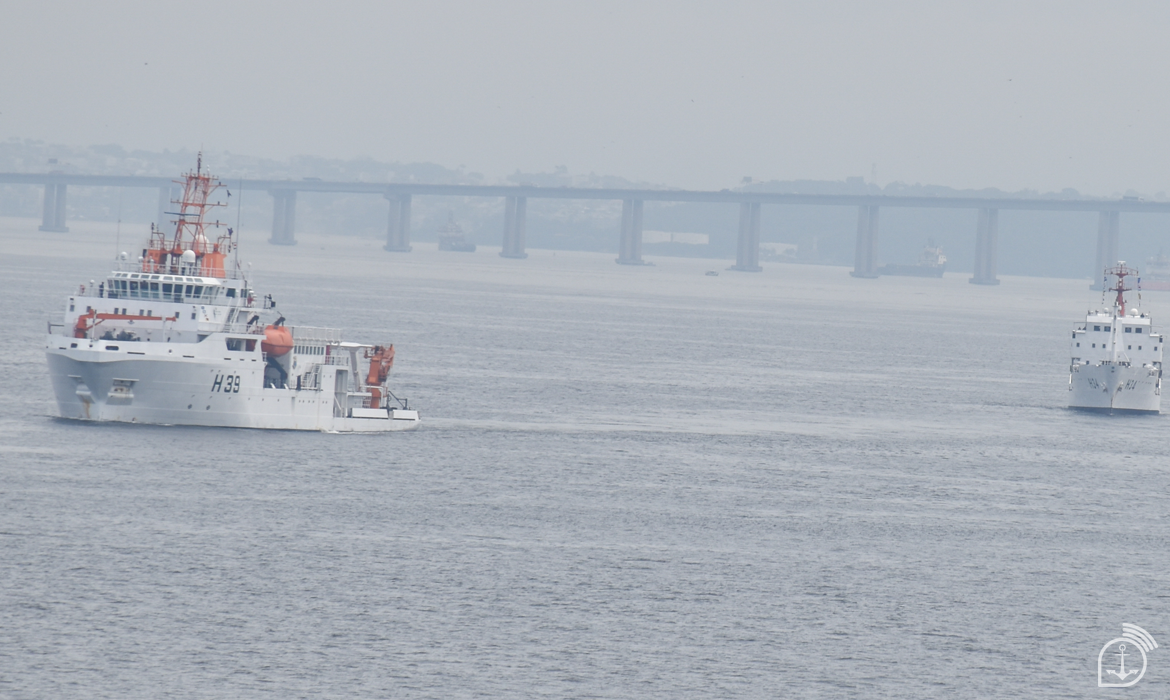It even looked like a movie scene, but it was the power of the “white ships” of the Brazilian Navy (MB) parading through Guanabara Bay, near Niterói (RJ). The symbolic passage, on the morning of this Tuesday (20), marked the opening of the 2024 Hydrographic Year.
The traditional schedule begins the calendar of actions for the vessels of the Directorate of Hydrography and Navigation (DHN). The famous “white ships” work to increase navigation safety, in addition to producing information about the marine environment.
Demonstrating the potential of the DHN, as a Brazilian Hydrographic Service, was also an opportunity to bring the population even closer to the Navy’s activities. Those who were able to see the ships anchored in front of the Ponta da Armação Naval Complex appreciated the means responsible for contributing to the safeguarding of human life, national development and the application of Naval Power.

The Director of Hydrography and Navigation, Vice Admiral Carlos André Coronha Macedo, explained what the Hydrographic Year actually means for the country. “Today we undock to carry out our mission. Our courage to navigate in uncharted areas, our commitment to checking the data obtained and our exemplary esprit de corps are just a few attributes that lead to a Hydrographic Year of excellence”, he explains.
DHN Technical Superintendent, Reserve Captain of Sea and War Edson Carlos Furtado Magno, remembers that this moment is already part of the Navy’s history. “In the past, ships undocked to begin cartography and oceanographic data collection activities. These actions always began with the opening of the Hydrographic Year and, therefore, we maintained this tradition.”
In total, five vessels participated in the Naval Parade and, shortly afterwards, launched to sea to fulfill their respective scheduled commissions, with only the Oceanographic Vessel “Antares” returning to mooring at the Directorate of Hydrography and Navigation, with commission scheduled for March. :
• Oceanographic Research Vessel “Vital de Oliveira” – Scientific Collections on the Equatorial Margin;
• Oceanographic Research Vessel “Almirante Graça Aranha” – Hydrographic survey in Lagoa dos Patos (RS);
• Oceanographic Research Vessel “Taurus” – Hydrographic Survey in the Port of Cabedelo (PB);
• Oceanographic Research Vessel “Aspirante Moura” – Maintenance of Nautical Signaling in Enseada do Abraão.
For the Deputy Director of DHN, Captain of Sea and War Paschoal Mauro Braga Mello Filho, it is actions like this that point to the future. “This year, some challenges arise for all of us hydrographers, such as maintaining our coastline completely mapped and with this updated cartography. In addition, there are numerous navigation aids to be monitored, such as occupied lighthouses, lighthouses and buoys, along our entire coast.”
Other challenges are among the priorities for engagement throughout the year, such as the continuation of work to determine the limits of Brazil’s extended Continental Shelf and support for the Comandante Ferraz Antarctic Station, in continuity with Antarctic Operations.

